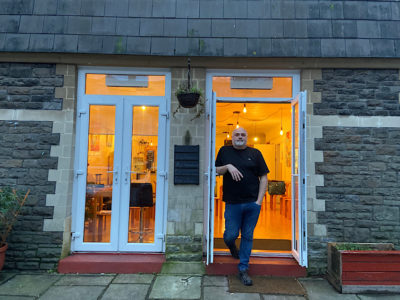What birds of prey are in South Wales?
Here’s a selection of some of the less common birds of prey that have made South Wales their home
Hen Harrier
RSPB status: Red. Hen harriers are more often seen in South Wales during the winter, and tend to eat small birds and mammals.
Honey Buzzard
RSPB status: Amber. A larger bird of prey, honey buzzards are often seen between May and August as they come to Wales and the rest of the UK to breed.
Merlin
RSPB status: Amber. Merlins are the UK’s smallest bird of prey and prefer coastal areas in the winter, so it is most common to see them then.
Red Kite
RSPB status: Amber. Not uncommon in Wales, red kites mostly eat carrion but will sometimes take small mammals. They’re easily recognisable soaring in the sky by their forked tails.
KEY:
Red Status – Globally threatened, historical decline in UK
Amber Status – Historical UK population decline, but recovering
A video found on youtube of a red kite feeding station in Wales:
[youtube]https://www.youtube.com/watch?v=fZ-RljYK59M[/youtube]
Winter brings to Wales cold weather, manic shopping and Hen Harriers. The latter of these is close to extinction in the UK.
This year, human birth rates went up by 18% across England and Wales. The hen harrier, however, failed to breed successfully in the UK in 2013 due to illegal persecution. Every year, numerous birds of prey are killed and captured in Wales despite being protected by the law.
Following the release of the RSPB’s most recent annual birdcrime report, the issue caught the attention of the media after naturalist and RSPB vice-president Bill Oddie branded the illegal persecution of birds of prey as “still a huge problem” in a statement published in the RSPB’s website.
Although the majority of birdcrime is shown to be in England, there are concerns about the rising number of crimes against wild birds of prey in Wales.
For years, Wales has been known for the red kite. With two feeding stations, the birds are a valuable source of tourism and income for the businesses that run the feeding stations. But at least nine other species have found a home here, including hen harriers, and for over five years Cardiff City Hall’s clock tower has been home to a nesting pair of peregrine falcons.
Crimes against wild birds of prey
Despite all wild birds being protected under the Wildlife and Countryside Act of 1981, the illegal persecution of birds of prey continues across the UK, and has been going up each year in Wales. In 2009 there were 24 reported incidents against birds of prey in Wales. In 2013, this figure had risen by 54%.
Even though there were 37 reports against wild birds of prey made in Wales last year – and a total of 46 reports against wild birds overall – only four wild bird related prosecutions were made in Wales.
Ian Guildford, Investigative Support Officer for the National Wildlife Crime Unit, says, “Unfortunately, very few reported crimes result in prosecutions in court. If a conviction is successful it will result in a punishment, but this varies depending on the circumstances of the offence.”
The punishment for the illegal persecution of birds of prey is either a fine of up to £5000, up to six months in prison, or both. As there are so many crimes still being committed against wild birds it begs the question as to whether this is enough.
Birdcrime in Wales
Howard Jones, RSPB Investigations Officer, says, “South Wales has historically had some problems with bird of prey persecution.”
The majority of crimes against birds of prey in Wales appear to be poisoning, according to Jones. Game keepers and farmers will often target wild birds of prey with poisoned bait in order to protect their animals and businesses, using illegal poisons.
“This year there have been roughly 10 suspected instances of poisoning that we are aware of having been reported so far,” says Guildford. He also adds that not all of these are confirmed poisoning, and are only cases submitted into the government’s Wildlife Incident Investigations Scheme – there may be far more incidents they are unaware of.
Stephen Bladwell, of RSPB Cymru, has said in an online statement that he believes the Government needs to help end the illegal persecution of birds of prey. The report itself, though, shows quite the opposite; it states that “the Government said it would wait to see what the effect of prosecutions would be over several years” despite the Environmental Audit Committee calling for more prompt action.
The Future
In spite of the negativity surrounding the report, the future isn’t necessarily all bad for wild birds of prey. The RSPB have many ongoing campaigns to save these amazing creatures, including the launch of a five year project to save the hen harrier (which will rely heavily on public donations).
In South Wales, there are a few organisations that look out for the safety of our wild birds, for example the South Wales raptor watch are dedicated to monitoring and protecting wild birds of prey.
Malcolm Jones, who set up the Ebbw Vale Owl Sanctuary, has dedicated a large portion of his life to not only keeping birds of prey and educating people about them, but also providing a refuge for injured birds. The sanctuary is regularly able to protect injured birds and release them back into the wild where they belong.

An American Red-Tail – one of the captive, non-native species at Ebbw Vale used for demonstrations and public interaction
“The Sanctuary has been running since 1992,” says volunteer, Kristopher Britton. “We get injured birds all year round – mainly Buzzards.
“All funding is raised by Pat and Malcolm [the owners] by taking the captive birds out to fairs and educational visits to schools, and the kind donations of visitors.”
What birds of prey are in South Wales?
Here’s a selection of some of the less common birds of prey that have made South Wales their home
Hen Harrier
RSPB status: Red. Hen harriers are more often seen in South Wales during the winter, and tend to eat small birds and mammals.
Honey Buzzard
RSPB status: Amber. A larger bird of prey, honey buzzards are often seen between May and August as they come to Wales and the rest of the UK to breed.
Merlin
RSPB status: Amber. Merlins are the UK’s smallest bird of prey and prefer coastal areas in the winter, so it is most common to see them then.
Red Kite
RSPB status: Amber. Not uncommon in Wales, red kites mostly eat carrion but will sometimes take small mammals. They’re easily recognisable soaring in the sky by their forked tails.
KEY:
Red Status – Globally threatened, historical decline in UK
Amber Status – Historical UK population decline, but recovering
A video found on youtube of a red kite feeding station in Wales:
[youtube]https://www.youtube.com/watch?v=fZ-RljYK59M[/youtube]







